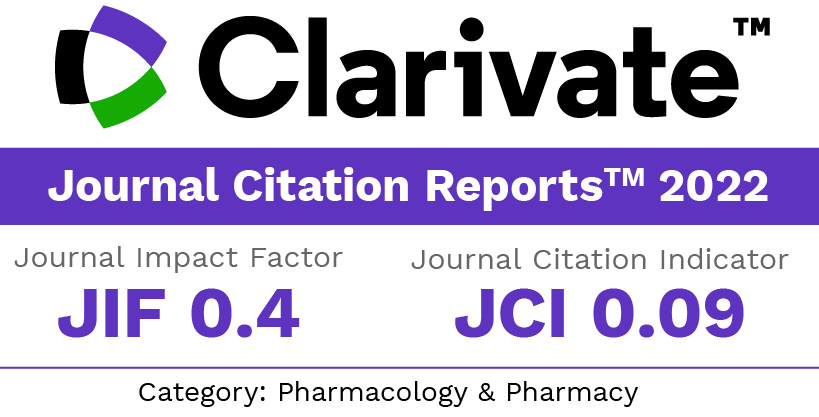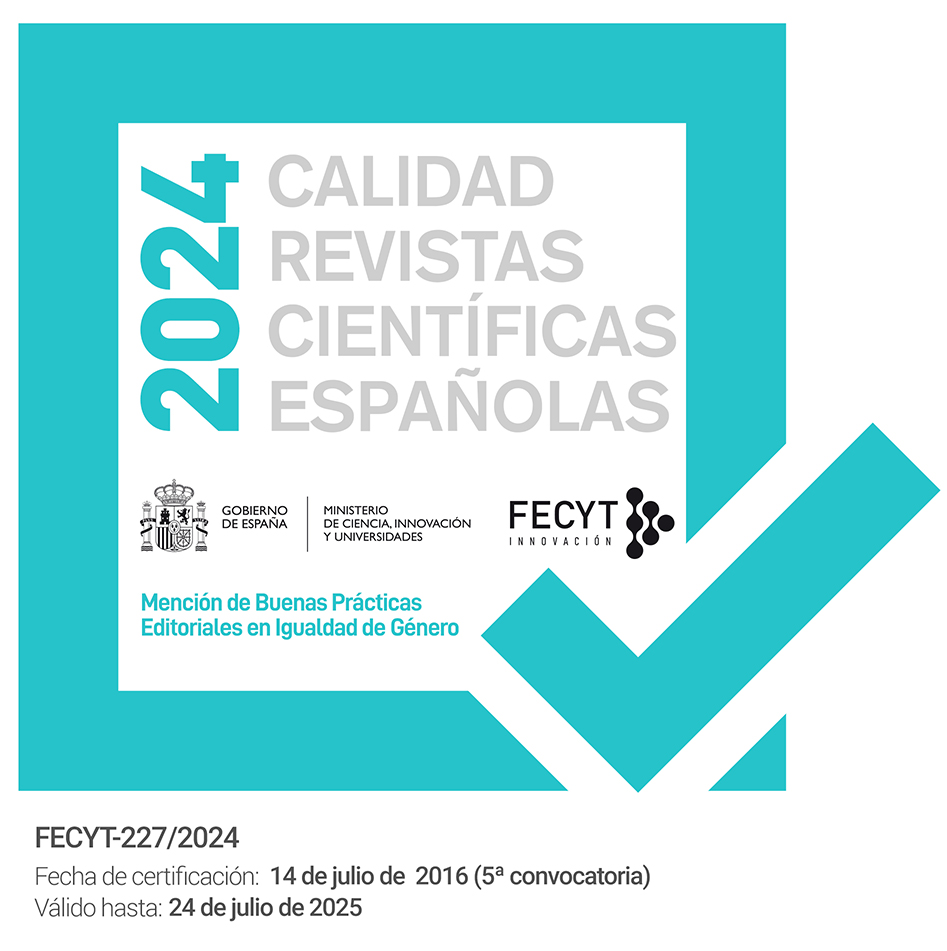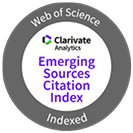Applications of Photopharmacology in Oncology: A State-of-the-Art Review
DOI:
https://doi.org/10.30827/ars.v66i4.33781Keywords:
Photopharmacology; Antineoplastic Agents; Drug Delivery SystemsAbstract
Introduction: Photopharmacology has emerged as a key discipline for the development of highly selective targeted drugs, enabling control over their activation through specific light irradiation. Given the invasive and non-selective nature of many traditional cancer therapies, there is growing interest in this field. This review explores its most relevant applications in cancer treatment.
Method: A narrative literature review was conducted using academic databases such as PubMed, Science Direct, Wiley, and Google Scholar. Articles published in English or Spanish, with free full-text access and related to photopharmacology and oncological diseases, were included. A total of 23 articles were selected based on eligibility criteria and a critical reading of their content.
Results: The reviewed studies highlight multiple applications of photopharmacology in oncology: from light-activated systems for localized therapeutic agent release, to the design of photoactivatable prodrugs, and optical control of microtubules and nuclear receptors. These advances allow for precise spatiotemporal modulation of pharmacological action, showing promising outcomes in prostate, lung, colon, and other cancers.
Conclusions: Photopharmacology represents an innovative therapeutic approach with high potential in oncology, offering more precise, reversible, and less toxic treatments. Its clinical success will depend on the development of safer and more effective activation technologies, as well as the refinement of photoactivatable compounds.
Downloads
References
Kobauri P, Dekker F, Szymanski W, Feringa B. Rational design in photopharmacology with molecular photoswitches. Angew Chem Int Ed. 2023;62(30):e202300681. doi: 10.1002/anie.202300681
Mubeen M. Photopharmacology. Sch Acad J Pharm. 2020;9(12):336-339. doi: 10.36347/sajp.2020.v09i12.002
Sánchez M, Sánchez P, Araña Z, Sánchez P, Santos M. Una mirada al cáncer desde la perspectiva molecular. Rev Finlay. 2022;12(2):208-220. Disponible en: http://scielo.sld.cu/scielo.php?script=sci_arttext&pid=S2221-24342022000200208
Sagué K, Sagué J, Gómez B, Díaz M. Acción biológica de la terapia fotodinámica sobre el cáncer de vejiga. Correo Científico Médico. 2020;23(2):585-598. Disponible en: http://scielo.sld.cu/scielo.php?script=sci_arttext&pid=S156043812019000200585
Kang W, Liu Y, Wang W. Light-responsive nanomedicine for cancer immunotherapy. Acta Pharm Sin B. 2023;13(6):2346-2368. doi: 10.1016/j.apsb.2023.05.016
Dunkel P, Ilaš J. Targeted cancer therapy using compounds activated by light. Cancers (Basel). 2021;13(13):3232. doi: 10.3390/cancers13133237
Uhl E, Wolff F, Mangal S, Dube H, Zanin E. Light-controlled cell-cycle arrest and apoptosis. Angew Chem Int Ed. 2021;60(3):1187-1196. doi: 10.1002/anie.202008267
Yi J, Yang X, Zheng L, Yang G, Sun L, Bao Y, et al. Photoactivation of hypericin decreases the viability of RINm5F insulinoma cells through reduction in JNK/ERK phosphorylation and elevation of caspase-9/caspase-3 cleavage and Bax-to-Bcl-2 ratio. Biosci Rep. 2015;35(3):e00191. doi: 10.1042/BSR20150028
Chakraborty I, Jimenez J, Mascharak P. CO-induced apoptotic death of colorectal cancer cells by a luminescent photoCORM grafted on biocompatible carboxymethyl chitosan. Chem Commun (Camb). 2017;53(40):5519-5522. doi: 10.1039/C7CC02842C
Lameijer N, Ernst D, Hopkins S, Meijer M, Askes S, Le Dévédec S, et al. A red-light-activated ruthenium-caged NAMPT inhibitor remains phototoxic in hypoxic cancer cells. Angew Chem Int Ed. 2017;56(38):11549-11553. doi: 10.1002/anie.201703890
Horbatok K, Makhnii T, Kosach V, Danko V, Kovalenko A, Fatiushchenkov S, et al. In vitro and in vivo evaluation of photocontrolled biologically active compounds: potential drug candidates for cancer photopharmacology. J Vis Exp. 2023;(199):e64902. doi: 10.3791/64902
Kirchner S, Pianowski Z. Photopharmacology of antimitotic agents. Int J Mol Sci. 2022;23(10):5657. doi: 10.3390/ijms23105657
Wages F, Brandt T, Martin H, Herges R, Möser E. Light-switchable diazocines as potential inhibitors of testosterone-synthesizing 17β-hydroxysteroid dehydrogenase 3. Chem Biol Interact. 2024;383:110872. doi: 10.1016/j.cbi.2024.110872
Xu Y, Gao C, Andreasson M, Håversen L, Carrasco M, Fleming C, et al. Design and development of photoswitchable DFG-out RET kinase inhibitors. Eur J Med Chem. 2022;243:114226. doi: 10.1016/j.ejmech.2022.114226
Komarova I, Tolstanova G, Kuznietsova H, Dziubenko N, Yanchuka P, Shtanova L, et al. Towards in vivo photomediated delivery of anticancer peptides: insights from pharmacokinetic and -dynamic data. J Photochem Photobiol B. 2022;233:112479. doi: 10.1016/j.jphotobiol.2022.112479
Tiapko O, Groschner K. TRPC3 as a target of novel therapeutic interventions. Cells. 2018;7(7):83. doi: 10.3390/cells7070083
Mutter N, Volaric J, Szymanski W, Maglia G, Feringa B. Reversible photocontrolled nanopore assembly. J Am Chem Soc. 2019;141(36):14356-14363. doi: 10.1021/jacs.9b06998
Long K, Wang Y, Lv W, Yang Y, Xu S, Zhan C, et al. Photoresponsive prodrug-dye nanoassembly for in-situ monitorable cancer therapy. Bioeng Transl Med. 2022;7(3):e10311. doi: 10.1002/btm2.10311
Palasis K, Lokman N, Quirk B, Adwal A, Scolaro L, Huang W. Optical fibre-enabled photoswitching for localised activation of an anti-cancer therapeutic drug. Int J Mol Sci. 2021;22(19):10844. doi: 10.3390/ijms221910844
Szymanski W, Ourailidou M, Velema W, Dekker F, Feringa B. Light-controlled histone deacetylase (HDAC) inhibitors: towards photopharmacological chemotherapy. Chem Eur J. 2015;21(46):16517-16524. doi: 10.1002/chem.201502809
Sharma V, Rana R, Baksi R, Borse S, Nivsarkar M. Light-controlled calcium signalling in prostate cancer and benign prostatic hyperplasia. Futur J Pharm Sci. 2020;6(1):28. doi: 10.1186/s43094-020-00046-w
Bonnet S. Ruthenium-based photoactivated chemotherapy. J Am Chem Soc. 2023;145(43):23397-23415. doi: 10.1021/jacs.3c01135
Eli S, Castagna R, Mapelli M, Parisini E. Recent approaches to the identification of novel microtubule-targeting agents. Front Mol Biosci. 2022;9:841777. doi: 10.3389/fmolb.2022.841777
Wang X, Gigant B, Zheng X, Chen Q. Microtubule-targeting agents for cancer treatment: seven binding sites and three strategies. MedComm Oncol. 2023;2(3):e46. doi: 10.1002/mog2.46
Borowiak M, Nahaboo W, Reynders M, Nekolla K, Jalinot P, Hasserodt J, et al. Photoswitchable inhibitors of microtubule dynamics optically control mitosis and cell death. Cell. 2015;162(2):403-411. doi: 10.1016/j.cell.2015.06.049
Wranik M, Weinert T, Slavov C, Masini T, Furrer A, Gaillard N, et al. Watching the release of a photopharmacological drug from tubulin using time-resolved serial crystallography. Nat Commun. 2023;14(1):599. doi: 10.1038/s41467-023-36481-5
Mukhopadhyay T, Willems S, Arp C, Morstein J, Haake C, Merk D, et al. Development of light-activated LXR agonists. Chem Med Chem. 2023;18(11):e202200647. doi: 10.1002/cmdc.202200647
Zhou J, Wang G, Chen Y, Wang H, Hua Y, Cai Z. Immunogenic cell death in cancer therapy: present and emerging inducers. J Cell Mol Med. 2019;23(8):4854-4865. doi: 10.1111/jcmm.14356
Volaric J, van der Heide N, Mutter N, Samplonius D, Helfrich W, Maglia G, et al. Visible light control over the cytolytic activity of a toxic pore-forming protein. ACS Chem Biol. 2024;19(2):451-461. doi: 10.1021/acschembio.3c00640
Downloads
Published
How to Cite
Issue
Section
License
Copyright (c) 2025 Luis Esteban Jiménez Sánchez

This work is licensed under a Creative Commons Attribution-NonCommercial-ShareAlike 4.0 International License.
The articles, which are published in this journal, are subject to the following terms in relation to the rights of patrimonial or exploitation:
- The authors will keep their copyright and guarantee to the journal the right of first publication of their work, which will be distributed with a Creative Commons BY-NC-SA 4.0 license that allows third parties to reuse the work whenever its author, quote the original source and do not make commercial use of it.
b. The authors may adopt other non-exclusive licensing agreements for the distribution of the published version of the work (e.g., deposit it in an institutional telematic file or publish it in a monographic volume) provided that the original source of its publication is indicated.
c. Authors are allowed and advised to disseminate their work through the Internet (e.g. in institutional repositories or on their website) before and during the submission process, which can produce interesting exchanges and increase citations of the published work. (See The effect of open access).























